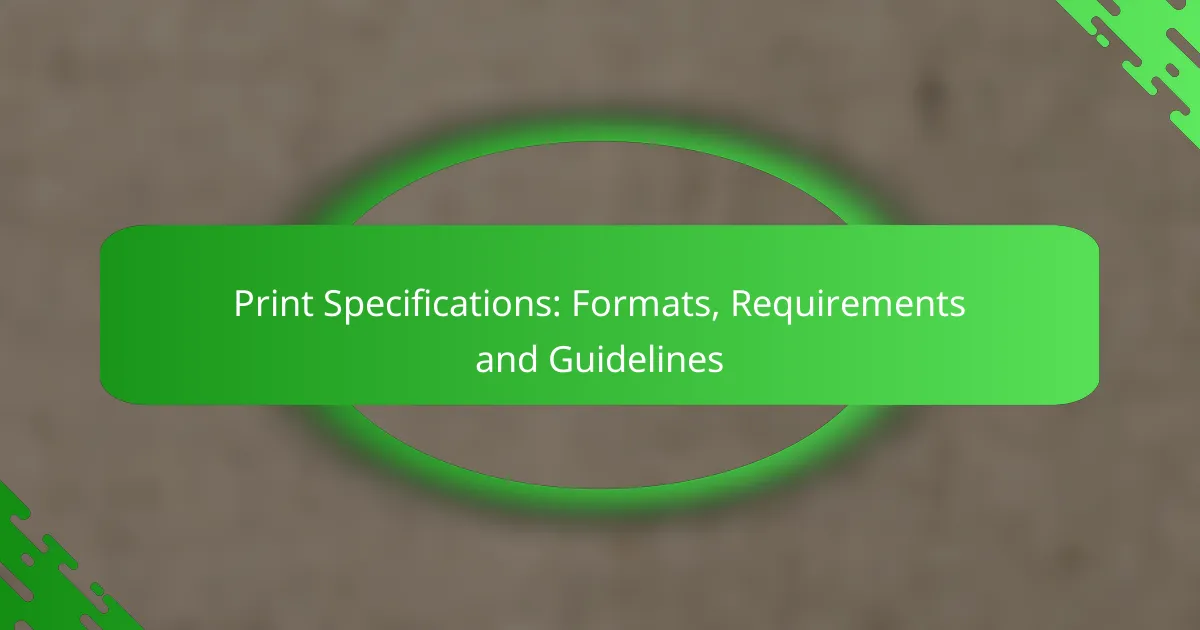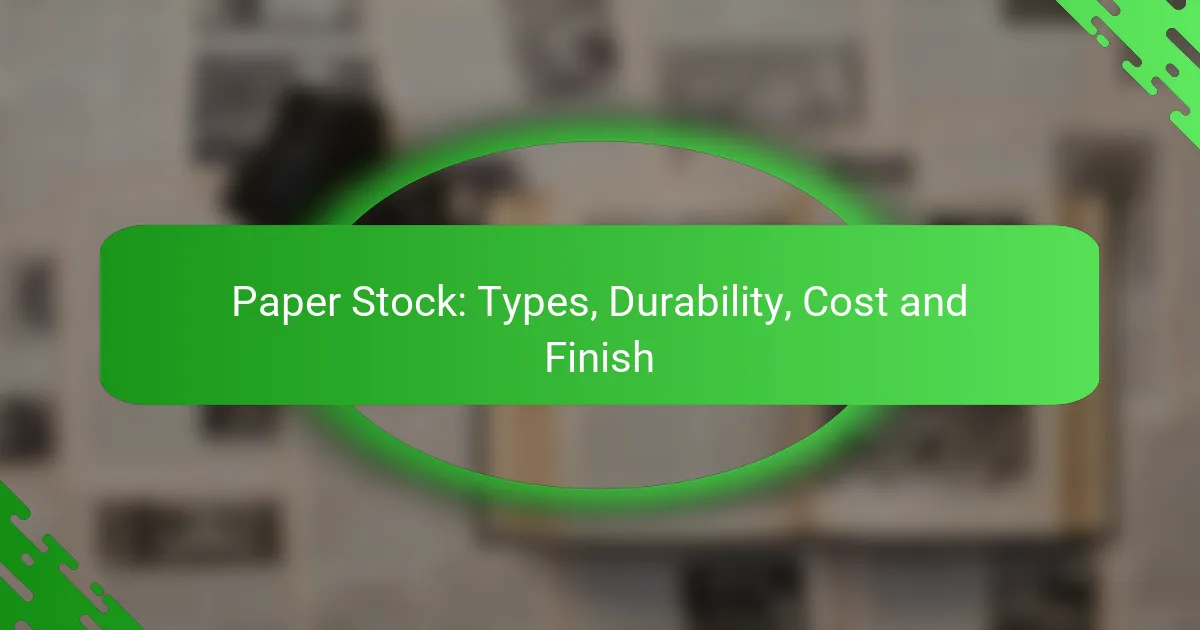When deciding between digital and offset printing, it’s essential to understand their distinct advantages and ideal applications. Digital printing is best suited for short runs and projects requiring quick turnaround times and customization, while offset printing shines in high-volume jobs where quality and consistency are paramount. Each method has its unique strengths, making it crucial to choose the right one based on your specific printing needs.
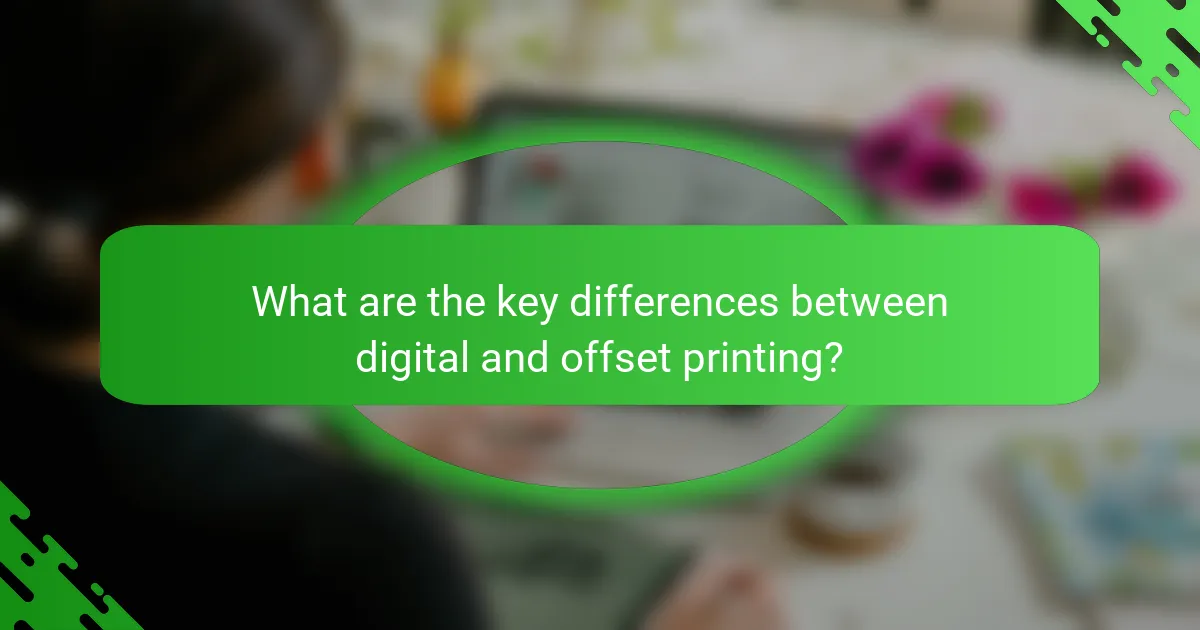
What are the key differences between digital and offset printing?
Digital printing and offset printing differ primarily in their processes, costs, and applications. Digital printing is ideal for short runs and quick turnaround times, while offset printing excels in high-volume jobs with superior quality and color accuracy.
Cost-effectiveness for small runs
Digital printing is generally more cost-effective for small print runs, often accommodating orders as low as 50 copies without significant setup costs. In contrast, offset printing typically requires larger quantities, often starting at several hundred units, to justify the initial setup expenses.
For businesses needing fewer prints, digital options can save money and reduce waste, making it a practical choice for marketing materials or personalized items.
Quality and color accuracy
Offset printing is renowned for its high-quality output and color consistency, making it the preferred choice for projects requiring precise color matching, such as brand materials. The offset process uses plates to transfer ink, allowing for more vibrant colors and finer details.
Digital printing has improved significantly in quality, but it may not always match the color fidelity of offset, especially for large areas of solid color. For projects where quality is paramount, offset remains the gold standard.
Speed of production
Digital printing offers faster production times, often completing jobs within hours, which is ideal for urgent projects. This speed is due to the lack of setup time associated with plates and other preparations required in offset printing.
Offset printing, while slower due to its setup process, becomes more efficient with larger quantities, as the per-unit time decreases significantly with higher volumes.
Material compatibility
Digital printing can accommodate a variety of materials, including paper, cardstock, and even some textiles, making it versatile for different applications. However, it may have limitations with specialty substrates.
Offset printing is compatible with a broader range of materials, including thicker stocks and unique finishes, which can be crucial for high-end products like brochures or packaging.
Setup time and complexity
Digital printing has minimal setup time, allowing for quick adjustments and immediate output, which is beneficial for short runs and last-minute changes. This simplicity makes it user-friendly for smaller businesses or those new to printing.
In contrast, offset printing involves a complex setup process, including plate creation and alignment, which can take hours or even days. This complexity is justified for larger orders where the quality and cost savings outweigh the initial time investment.
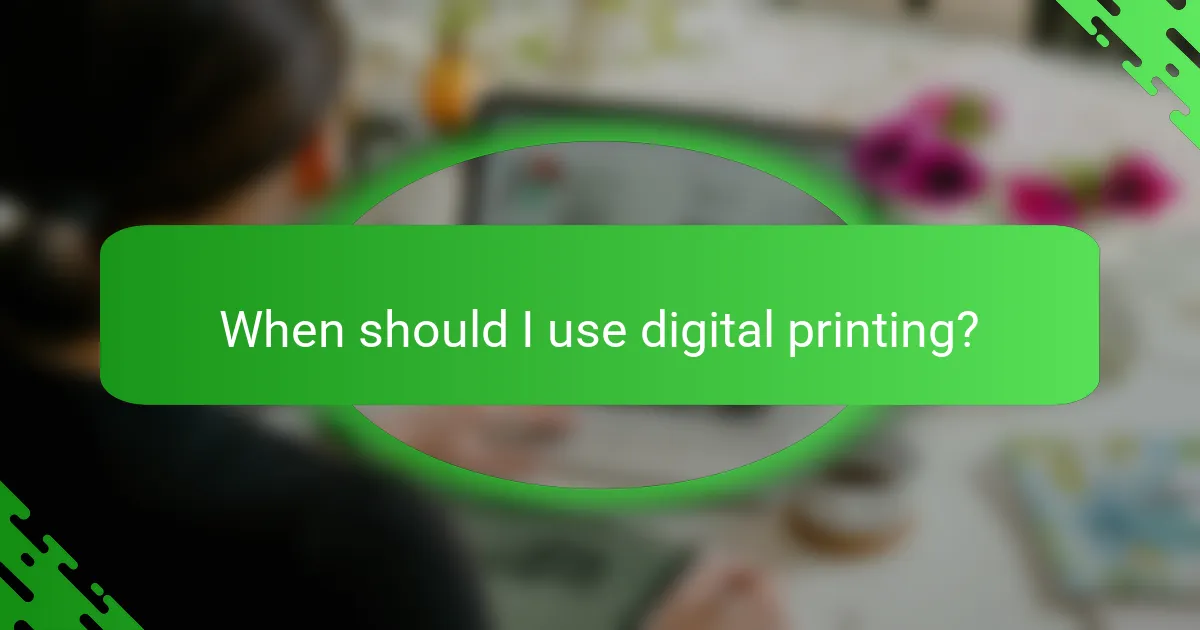
When should I use digital printing?
Digital printing is ideal for projects that require flexibility, quick production, and customization. It is particularly beneficial for short runs, unique designs, and when time is a critical factor.
Short print runs
Digital printing excels in producing small quantities of printed materials without the setup costs associated with traditional offset printing. For runs of fewer than 500 copies, digital methods are often more cost-effective and efficient. This makes it a great choice for businesses needing limited editions, prototypes, or test prints.
Custom designs and personalization
One of the standout features of digital printing is its ability to easily incorporate custom designs and personalization. Each piece can be tailored to individual recipients, such as personalized invitations or marketing materials with unique names. This flexibility allows for targeted marketing campaigns that can significantly enhance engagement.
Quick turnaround times
Digital printing typically offers faster turnaround times compared to offset printing. Projects can often be completed within a few days, making it suitable for urgent needs. For instance, if you require promotional materials for an upcoming event, digital printing can deliver high-quality results in a fraction of the time.

When is offset printing the better choice?
Offset printing is often the preferred option when producing large quantities of printed materials, particularly when high-quality images and cost efficiency are essential. This method excels in delivering consistent results across extensive runs, making it ideal for projects like brochures, magazines, and books.
Large volume printing
Offset printing is best suited for large volume printing due to its ability to produce thousands of copies quickly and efficiently. The setup costs can be high, but as the quantity increases, the cost per unit decreases significantly. For runs of several hundred to thousands of copies, offset printing becomes the most practical choice.
For instance, businesses often choose offset printing for promotional materials, where producing 1,000 or more copies can lead to substantial savings compared to digital printing methods.
High-quality image reproduction
Offset printing provides superior image quality, particularly for detailed graphics and vibrant colors. The process uses plates to transfer ink, allowing for precise color registration and smooth gradients that digital printing may struggle to achieve. This makes offset printing ideal for high-end publications and marketing materials that require a polished appearance.
For example, art books and high-quality catalogs benefit from offset printing’s ability to reproduce fine details and rich colors, ensuring that the final product meets professional standards.
Cost efficiency for bulk orders
When considering cost efficiency, offset printing shines for bulk orders due to lower costs per unit as the volume increases. While the initial setup costs can be significant, the price advantage becomes apparent with larger quantities, often making it the more economical choice for businesses needing extensive print runs.
For instance, a company printing 5,000 flyers will find that offset printing drastically reduces the cost per flyer compared to smaller runs, making it a financially sound decision for marketing campaigns.
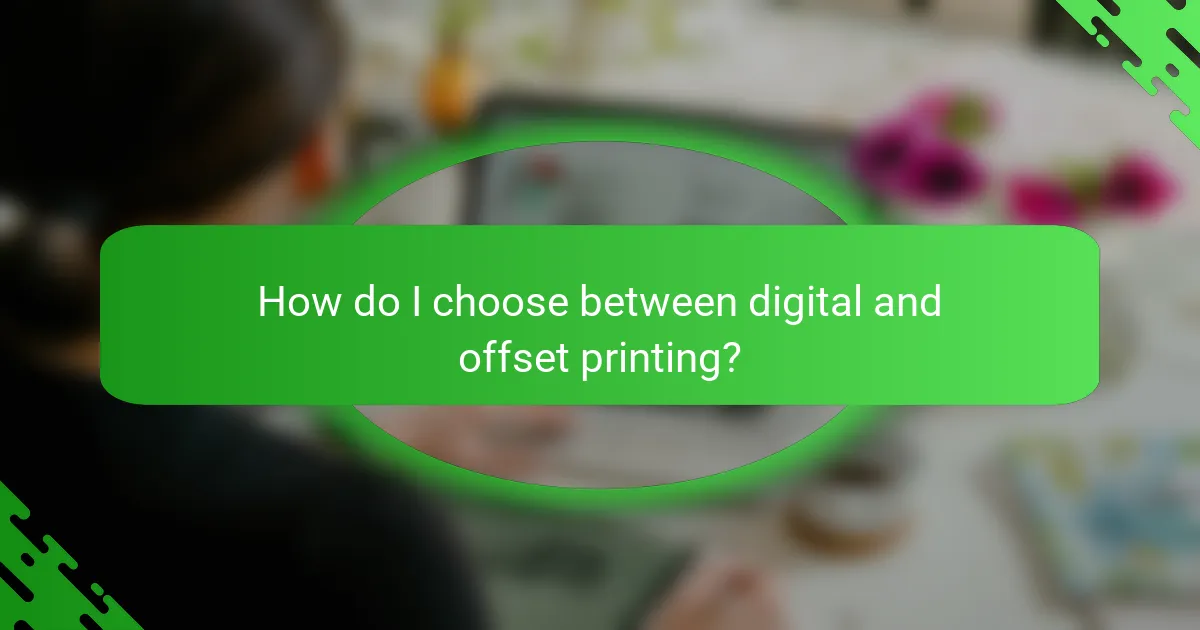
How do I choose between digital and offset printing?
Choosing between digital and offset printing depends on your specific project needs, budget, and audience. Digital printing is ideal for short runs and quick turnarounds, while offset printing excels in high-volume jobs with consistent quality.
Assessing project requirements
Start by determining the quantity and type of materials you need. Digital printing is suitable for smaller quantities, often ranging from a few copies to several hundred, while offset printing is more efficient for larger runs, typically starting at around 500 copies.
Consider the complexity of your design as well. Digital printing can handle intricate designs and variable data easily, making it perfect for personalized items. In contrast, offset printing offers superior color accuracy and consistency, making it preferable for projects requiring precise color matching.
Evaluating budget constraints
Your budget will significantly influence your choice. Digital printing generally has a higher per-unit cost for small runs but lower setup fees, making it cost-effective for limited quantities. Offset printing, however, has higher initial costs due to setup but becomes cheaper per unit as quantity increases.
Factor in additional costs such as shipping and production time. Digital printing often allows for faster turnaround times, which can reduce overall costs if time is a critical factor.
Understanding target audience needs
Identify who will receive the printed materials and their preferences. If your audience values high-quality, professional-looking prints, offset printing might be the better choice due to its superior finish and color fidelity.
Conversely, if your project requires quick delivery or personalization, digital printing can cater to these needs effectively. Understanding your audience’s expectations will guide your decision on which printing method to use.

What are the environmental impacts of digital and offset printing?
Digital and offset printing each have distinct environmental impacts that vary based on resource consumption, waste management, and available eco-friendly options. Understanding these factors can help businesses make informed choices about their printing needs.
Resource consumption
Digital printing generally uses less energy and fewer resources than offset printing, especially for short runs. It eliminates the need for plates, which reduces material use and production time. However, offset printing can be more efficient for larger quantities, as the initial setup costs are spread over more units.
In terms of ink, digital printers often use liquid inks, which can have lower environmental impacts compared to the oil-based inks used in offset printing. Nonetheless, the choice of ink can vary widely among manufacturers, so it’s essential to consider the specific products being used.
Waste management practices
Offset printing typically generates more waste due to the production of plates and excess ink. This waste can include chemical byproducts that require careful disposal to meet environmental regulations. Digital printing, on the other hand, tends to produce less waste, but it still generates some scrap paper and ink cartridges that need proper recycling.
Both printing methods can benefit from improved waste management practices. Implementing recycling programs and choosing suppliers that prioritize sustainability can significantly reduce the overall environmental footprint.
Eco-friendly options available
Both digital and offset printing offer eco-friendly options, such as using recycled paper and vegetable-based inks. Many companies now provide certifications like FSC (Forest Stewardship Council) and SFI (Sustainable Forestry Initiative) to ensure that their materials are sourced responsibly.
For businesses looking to minimize their environmental impact, selecting printers that prioritize sustainability and offer green certifications can make a significant difference. Additionally, exploring print-on-demand services can reduce waste by producing only what is necessary, further enhancing eco-friendliness.
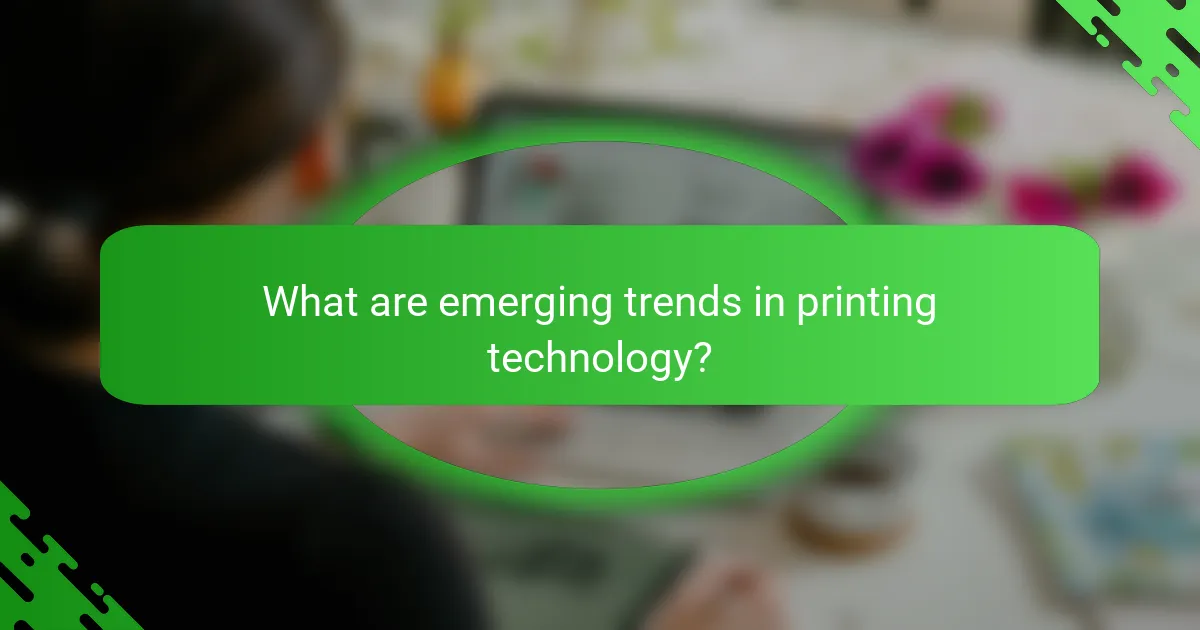
What are emerging trends in printing technology?
Emerging trends in printing technology focus on enhancing efficiency, sustainability, and customization. Innovations such as eco-friendly inks, on-demand printing, and automation are reshaping the landscape, making printing more accessible and environmentally responsible.
Advancements in digital printing
Digital printing has seen significant advancements, primarily through improved speed and quality. Technologies like inkjet and laser printing have evolved, allowing for high-resolution outputs and faster turnaround times, making them ideal for short runs and personalized projects.
One notable trend is the rise of variable data printing, which enables customization of each printed piece. This is particularly useful in marketing materials, where personalized content can lead to higher engagement rates. Additionally, digital printing often requires less setup time and fewer materials, reducing waste and costs.
When considering digital printing, evaluate your project needs. For small quantities or designs that require frequent updates, digital is often the better choice. However, for large volumes, offset printing may still be more cost-effective despite longer setup times.

